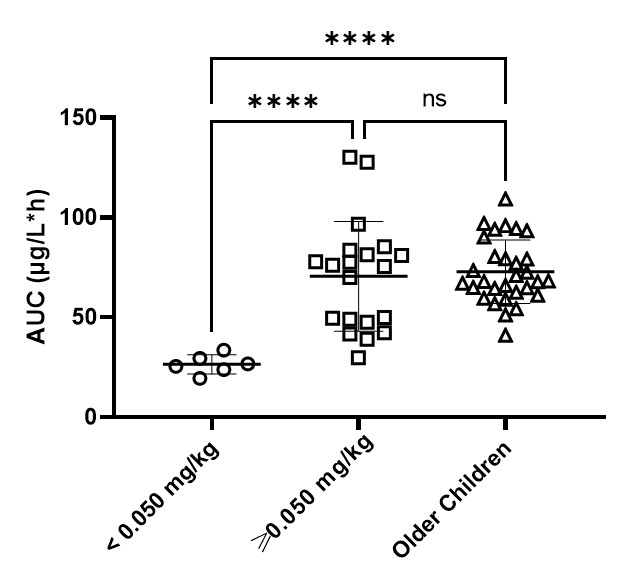B
Grade
Dinutuximab
Some PK studies in children have been published, however, no infants were included and the effect of age was not studied in most of the studies. However, the pharmacokinetic behavior of antibodies in infants is known. CL might be higher in younger patients.
Level 2
PK model including infants or PopPK model without infants
| Author | Method | Number of Patients/Infants(<1yrs) | Age(yr), Median(range) | Age related findings | ||
|---|---|---|---|---|---|---|
| Marachelian (2016) | Two compartment popPK model. BW included as an allometric covariate on CL and V in the model. | 28 / 0 | 4 (2-7) Arm 1. 4 (1-9) Arm 2, mean (range) | Effect of age not studied. |
Level 3
Non-compartmental PK study or PK model without infants
| Author | Method | Number of Patients/Infants(<1yrs) | Age(yr), Median(range) | Age related findings | ||
|---|---|---|---|---|---|---|
| Uttenreuther-Fischer (1995) | Two compartment PK model | 10 / 0 | 6.4 (2.1-11.4) | Effect of age was not studied. t1/2 values lower than those reported in adults | ||
| Ladenstein (2013) | Non-compartmental pharmacokinetics | 16 / 0 | 7.6 (3.8-17.3) | Effect of age was not studied. | ||
| Desai (2014) | Non-compartmental pharmacokinetics and Two compartment PK model | 14 / 0 | 4.3 (1.2-7.3) | CL normalized to BW shows a negative correlation with age. Younger children exhibit higher CL values. |


